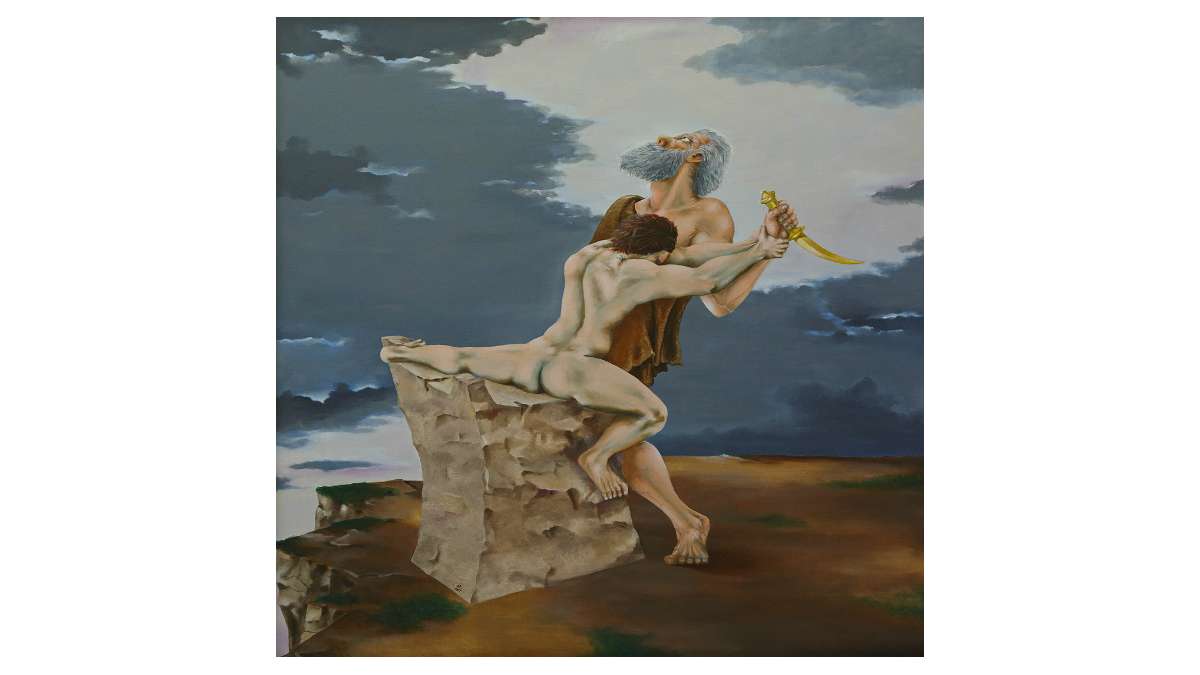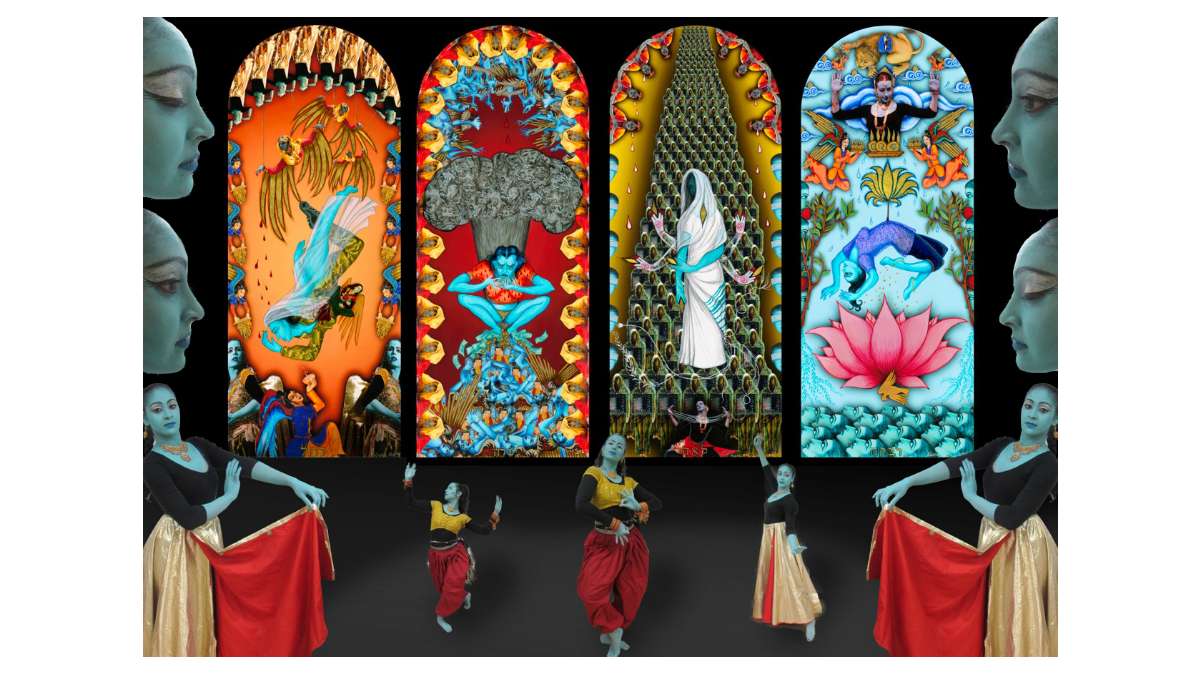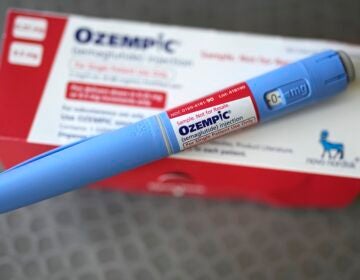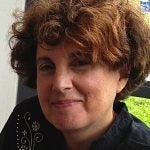Contemporary artists return to religious roots at Rider University exhibit
A 30-foot wall dominates the gallery at Rider University in Lawrence, NJ. On one side of Helene Aylon’s Wailing Wall, based on the holiest site in Judaism, are the pages of the Old Testament in Hebrew; on the other are the pages in English. Using a pink highlighter, Aylon has obliterated all the phrases that convey misogyny or patriarchal attitudes.
Aylon is one of five artists on view in Biblical Inspiration in a Secular Age at the Rider University Art Gallery through Dec. 6. These artists – Siona Benjamin, Hanan Harchol, Marc Malberg, Archie Rand and Aylon — share a common interest in the Old Testament, says guest curator Judith K. Brodsky. “They approach this canonical material with a critical, postmodern eye tempered by current philosophic and theoretic considerations: feminism; rebellion against contemporary art world conventions which demand secularism; extracting contemporary meaning from the ethical and moral precepts contained in the Old Testament; and an excitement in exploring a rich lode of ideas upon which Western civilization is built but has not been mined for years.”
God – or G-d, as Aylon spells it – has been hijacked by men. Born in 1931 and raised in the Orthodox Jewish tradition in Brooklyn, Aylon married a rabbi and had two children, but in a break from her tradition studied art with Abstract Expressionist Ad Reinhardt at Brooklyn College.
Just as she was coming out as an artist, Aylon’s husband died. She was 30. Soon she received a commission to create a 16-foot mural for a synagogue library at JFK International Airport that portrayed Judaism through the eyes of women. Aylon took off for Berkeley, California, landing a job teaching drawing and painting at San Francisco State University. She began creating a series of work that involved pouring linseed oil on paper or panel. It was all about relying on chance and the resultant transformation. As it dried, sacs would form, and she would invite other women to “midwife” the sacs, liquid gushing out. Aylon described it as a “very wet, orgasmic process art.”
These days, Aylon, who lives in New York, gets around with the aid of a walker. “You are so beautiful,” said one of her fans at the end of a recent talk she gave at the gallery. She wears a hat atop a scarf. On the cover of her 2012 memoir, “Whatever is Contained Must Be Released: My Jewish Orthodox Girlhood, My Life as a Feminist Artist” is a photograph from half a century ago, showing the artist with a full mane of untamed curly hair, dressed in black trousers and a black blouse with a deep V-neck. Aylon’s face, half lit and half in shadow, suggests both anger and determination. In the book she recounts how, as her mother instructed her to be a good girl, she was fermenting ground-breaking work that would be exhibited at Betty Parson’s Gallery, the Whitney, MoMA, the San Francisco Museum of Modern Art, the Andy Warhol Museum and the Jewish Museum. “I was already developing an aesthetic during my preadolescence” and it didn’t include “schmaltz,” she writes. Along the way she met the likes of Mark Rothko, Peter Schjeldahl, Edward Albee.
“I could always spot the difference between Orthodox and secular Jews,” she writes. And so where does Aylon position herself on the spectrum? A nephew has called her “post-Orthodox.” To answer the question, she instructs one to watch her video on a nearby wall, “Written Behind my Back,” previously shown at the Jerusalem Biennale.
Shrouded in a white garment, the artist appears against a white wall, as Hebrew words float across her. In the voice-over narration we hear: “Locusts will demolish you, worms will consume you because you have not obeyed. You will eat the flesh of your sons and daughters. He will bring back the Egyptian illnesses and plagues for you have not obeyed your god… your corpse will be free for all the birds in the sky and the animals.” And, in English text across the screen: “When it became my turn to kiss you I turned my back on you. I could not see what was written behind my back. Once I was your Sabbath bride. Your words were strung like pearls. Now I carry your weight on my back.”
In her memoir Aylon writes “It was only at the age of 60 that I dared to ‘come out’ as a formerly Orthodox Jew.”
In the 1980s, Aylon was a self-styled eco-feminist artist. Her “Earth Ambulance” – a converted U-Haul – was used to rescue soil from nuclear bases, uranium mines and nuclear reactors. Filling pillowcases at the sites, she transported the load to the United Nations during the Second Special Session on Nuclear Disarmament. There, the pillowcases were carried on army stretchers and dumped.
In 1985, for the 40th anniversary of the Hiroshima and Nagasaki bombings, she floated sacks of seed, grain, pods and bamboo on the rivers to those two cities. A video of the floating sacks was projected on the Sony Jumbotron in Times Square in 1995.
Biblical Inspiration in a Secular Age is on view at Rider University Art Gallerythrough Dec. 6.
______________________________________________________
The Artful Blogger is written by Ilene Dube and offers a look inside the art world of the greater Princeton area. Ilene Dube is an award-winning arts writer and editor, as well as an artist, curator and activist for the arts.
WHYY is your source for fact-based, in-depth journalism and information. As a nonprofit organization, we rely on financial support from readers like you. Please give today.










